Gabriella Panuccio
Semantic segmentation for recognition of epileptiform patterns recorded via Microelectrode Arrays in vitro
Feb 12, 2024



Abstract:Epilepsy is a prevalent neurological disorder that affects approximately 1% of the global population. Around 30-40% of patients do not respond to pharmacological treatment, leading to a significant negative impact on their quality of life. Closed-loop deep brain stimulation (DBS) is a promising treatment for individuals who do not respond to medical therapy. To achieve effective seizure control, algorithms play an important role in identifying relevant electrographic biomarkers from local field potentials (LFPs) to determine the optimal stimulation timing. In this regard, the detection and classification of events from ongoing brain activity, while achieving low power through computationally unexpensive implementations, represents a major challenge in the field. To address this challenge, we here present two lightweight algorithms, the ZdensityRODE and the AMPDE, for identifying relevant events from LFPs by utilizing semantic segmentation, which involves extracting different levels of information from the LFP and relevant events from it. The algorithms performance was validated against epileptiform activity induced by 4-minopyridine in mouse hippocampus-cortex (CTX) slices and recorded via microelectrode array, as a case study. The ZdensityRODE algorithm showcased a precision and recall of 93% for ictal event detection and 42% precision for interictal event detection, while the AMPDE algorithm attained a precision of 96% and recall of 90% for ictal event detection and 54% precision for interictal event detection. While initially trained specifically for detection of ictal activity, these algorithms can be fine-tuned for improved interictal detection, aiming at seizure prediction. Our results suggest that these algorithms can effectively capture epileptiform activity; their light weight opens new possibilities for real-time seizure detection and seizure prediction and control.
A Memristor-Inspired Computation for Epileptiform Signals in Spheroids
Jul 10, 2023



Abstract:In this paper we present a memristor-inspired computational method for obtaining a type of running spectrogram or fingerprint of epileptiform activity generated by rodent hippocampal spheroids. It can be used to compute on the fly and with low computational cost an alert-level signal for epileptiform events onset. Here, we describe the computational method behind this fingerprint technique and illustrate it using epileptiform events recorded from hippocampal spheroids using a microelectrode array system.
* published in 2023 IEEE 5th International Conference on Artificial Intelligence Circuits and Systems (AICAS)
NET-TEN: a silicon neuromorphic network for low-latency detection of seizures in local field potentials
Oct 19, 2022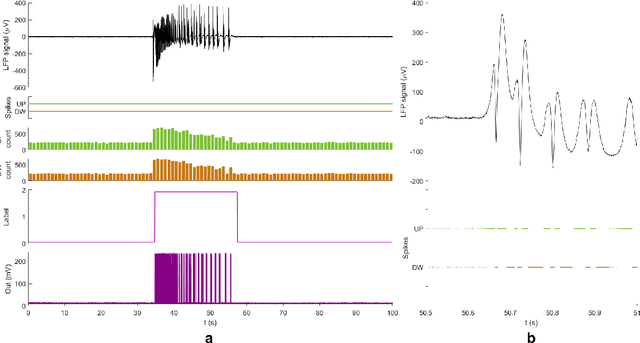

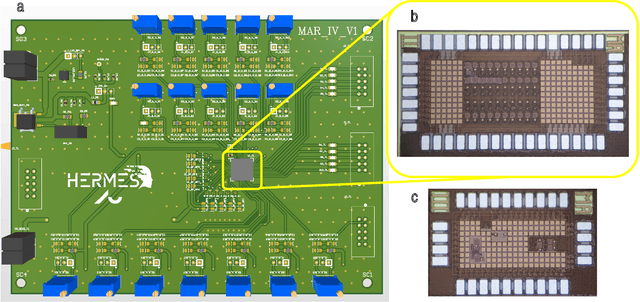
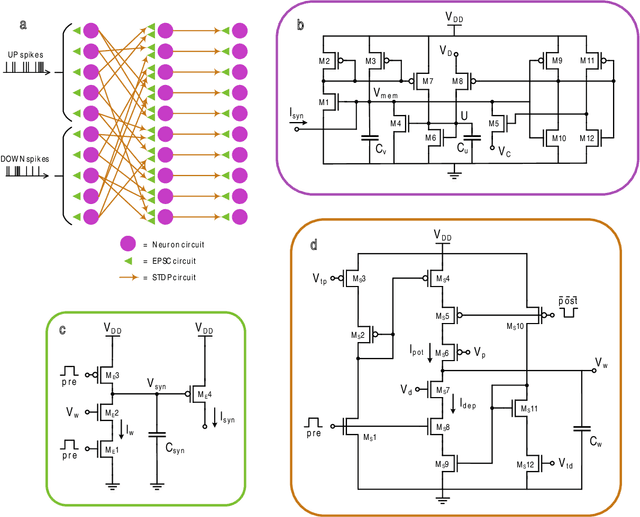
Abstract:Therapeutic intervention in neurological disorders still relies heavily on pharmacological solutions, while the treatment of patients with drug resistance remains an open challenge. This is particularly true for patients with epilepsy, 30% of whom are refractory to medications. Implantable devices for chronic recording and electrical modulation of brain activity have proved a viable alternative in such cases. To operate, the device should detect the relevant electrographic biomarkers from Local Field Potentials (LFPs) and determine the right time for stimulation. To enable timely interventions, the ideal device should attain biomarker detection with low latency while operating under low power consumption to prolong the battery life. Neuromorphic networks have progressively gained reputation as low-latency low-power computing systems, which makes them a promising candidate as processing core of next-generation implantable neural interfaces. Here we introduce a fully-analog neuromorphic device implemented in CMOS technology for analyzing LFP signals in an in vitro model of acute ictogenesis. We show that the system can detect ictal and interictal events with ms-latency and with high precision, consuming on average 3.50 nW during the task. Our work paves the way to a new generation of brain implantable devices for personalized closed-loop stimulation for epilepsy treatment.
Intelligent Biohybrid Neurotechnologies: Are They Really What They Claim?
Jul 18, 2016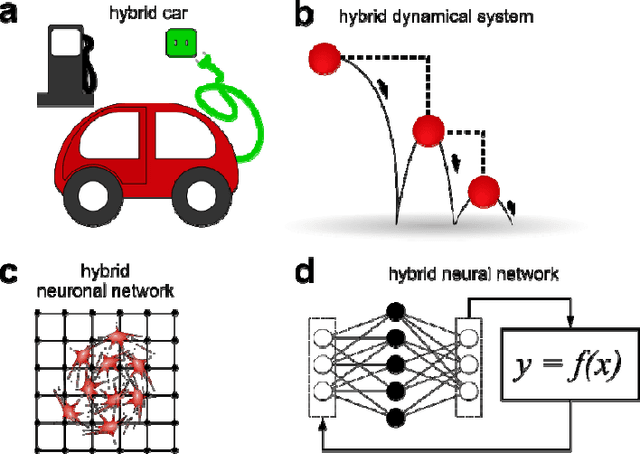


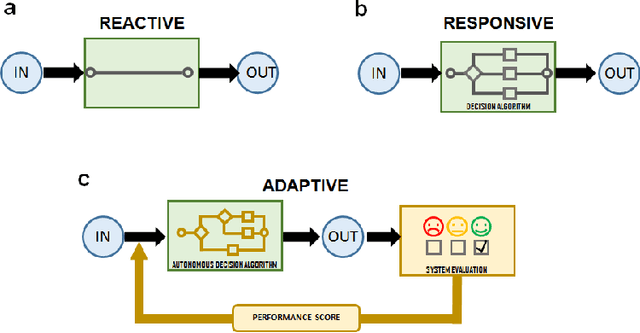
Abstract:In the era of intelligent biohybrid neurotechnologies for brain repair, new fanciful terms are appearing in the scientific dictionary to define what has so far been unimaginable. As the emerging neurotechnologies are becoming increasingly polyhedral and sophisticated, should we talk about evolution and rank the intelligence of these devices?
 Add to Chrome
Add to Chrome Add to Firefox
Add to Firefox Add to Edge
Add to Edge